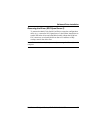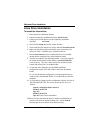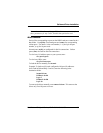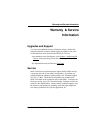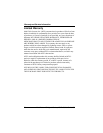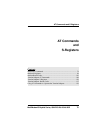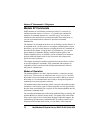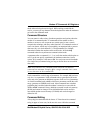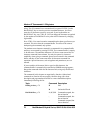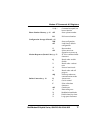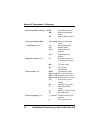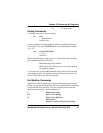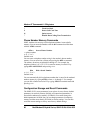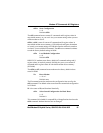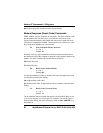
MultiModemISI Hybrid Series, ISIHP-2S/2U/4S/4U/4SD 75
Modem AT Commands & S-Registers
mode without losing the carrier signal. While waiting to establish the
carrier, you can type any character from the keyboard to make the modem to
go back to the command mode.
Command Structure
You can control a wide variety of modem operations and options when the
modem is in command mode. AT commands tell the modem to dial a
number, to answer a call, to operate at a certain speed, to use a certain
compression technique, and many other functions. AT commands consist of
one or two letters, which may be preceded by an ampersand (&), a percent
character (%), or a slash character (/). The Q command, for example,
determines whether the modem returns result codes, while the &Q
command selects the asynchronous communications mode.
A parameter after a command (0, 1, 2, etc.) tells the modem which option to
use. If you do not specify a parameter, the modem assumes the 0 (zero)
option. E, for example, is the same as E0. You can issue several commands
on a single line (a command string) as long as the line does not exceed 40
characters.
Note: Each character in a command counts toward the 40 character
command line maximum. Example: Q1 is a single command, but it counts
as two characters in the command line.
Each command has a valid range of parameters. For example, &S can have
only 0 or 1 as a parameter. Valid commands always generate an OK result
code, and a few generate an additional response such as a list of parameters.
An invalid command such as &S3, which has a parameter outside the valid
range, generates an ERROR result code. Most commands have a default
parameter that is enabled when the modem is turned on or reset with the
ATZ or AT&F command. Factory defaults are stored in read-only memory
(ROM) and cannot be changed. User-defined defaults can be stored in
nonvolatile random-access memory (NVRAM) and can be changed or
deleted at will.
Command Editing
Always begin a command with the letters AT. Enter the entire command
string in upper or lower case, but do not mix cases within the command



